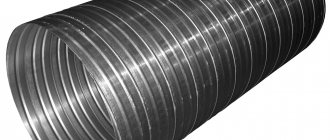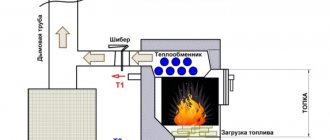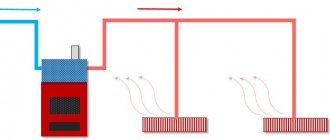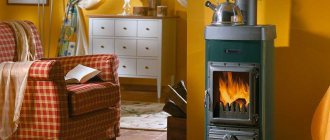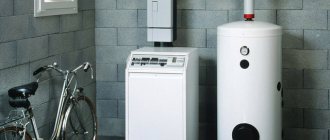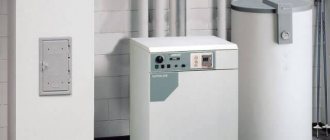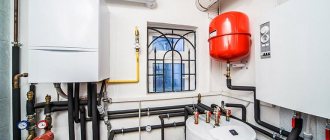Content
- Why is ventilation needed?
- Recommendations for arrangement
- Types of ventilation systems Natural ventilation system
- Installation of natural air exchange
- Forced air exchange system
- Methods for installing forced ventilation
- Supply and exhaust ventilation
- Installation
How to make ventilation yourself
Now let's directly figure out how to make ventilation in the basement. Ventilation in the basement is a whole system of channels that must be properly distributed.
Basement ventilation is done entirely by yourself and you will not incur additional costs, only for components. To independently provide ventilation in the basement, you need to understand the principle of air exchange.
As mentioned above, ventilation is a whole system of shafts or pipes, which must provide all the necessary values of temperature, humidity and air exchange. This means that the choice of ventilation scheme will depend entirely on the area of the basement.
Attention: for basements with an area of less than 50 m2, it is better to choose natural ventilation, and in other cases - forced ventilation.
So:
- When choosing forced ventilation, before starting construction of a house, it is imperative to design it, that is, draw up a plan for the location of all its elements. This is the only way to greatly simplify and facilitate the installation of the structure as a whole.
- To install forced ventilation in an already built house, it is necessary to perform complex and labor-intensive work using specialized equipment to create channels and holes in the foundation, basement and in the floor of the house itself.
- In addition, it is important to choose the right pipes. Now the building materials market offers a wide selection of various materials for installing ventilation in basements. But most often, PVC pipes or pipes with galvanized sheet are used for its implementation due to their simple installation.
Attention: Although the installation of metal air ducts requires special knowledge and skills, the ventilation system using them will last much longer.
What does natural ventilation consist of?
The operation of natural ventilation is based on the movement of air due to the temperature difference between the basement and the outdoor environment. Thanks to this simple physical phenomenon, warm air from the basement comes out, and at the same time colder and fresher air enters the basement from the street. The force of air draft in this case will depend on the strength of the wind, which can strengthen it or, conversely, weaken it, which is a big disadvantage of the natural ventilation system.
Natural ventilation installation diagram
The natural ventilation system includes three components:
- Exhaust duct;
- Supply channel;
- Hoods.
The advantage of such a system is its affordable price and ease of installation, but the disadvantage is that it depends on weather conditions and poor quality of air exchange.
Attention: The most correct decision would be that before installing a natural ventilation system in the basement, a diagram is drawn up that takes into account the volume of the basement and the air flow capacity of the pipes. To create such a project, you don’t need any engineering knowledge at all; you just need to indicate on it the location of the pipes and their diameter.
So:
- Supply and exhaust ventilation and its pipes should be located in opposite corners of the basement. The air supply pipe should be installed 10 cm higher in relation to the floor, while the air duct should be positioned 30 cm higher from the ground.
Attention: This pipe must be covered with a mesh. Then rodents will not get in to you. This is an important point.
- The exhaust hole should be located under the ceiling itself, and the pipe itself should be 40–60 cm above the ridge of the roof of the house. A supply pipe is installed in the opposite corner of the basement. To ensure normal ventilation, as independent as possible from the weather, it is necessary to install pipes of at least 12 cm in diameter.
Forced ventilation
Now let's look at how to make forced ventilation in the basement. This option will be quite beneficial in some cases. When making a basement, this type of ventilation will be more expensive. The price will depend on the size of the engines that will ensure the operation of the entire system.
Forced ventilation installation diagram
The basic principle of operation of a forced ventilation system is to pump air into the system using fans. If necessary, you can provide a system for cleaning the incoming air and adjusting its temperature. Next, the air is drawn inside the room using fans:
- As with natural ventilation, a project is first drawn up. It calculates the dependence of air exchange on the volume of the basement. The calculations are based on losses of 2 m3/hour per 1 m2. This value is multiplied by the volume of the basement and the result is the required fan performance.
- When choosing a fan, it is necessary to take into account pressure losses in the duct and, in order to minimize them, use a fan with a reserve. For example, for a basement with a volume of 100 m3, a channel length of 10 m and a diameter of 100 mm, the losses will be 200 m3/hour.
- In the diagram presented, from the point of intersection of the horizontal line, 200 m3/hour. and the diagonal line (d channel = 100 mm) we lower the straight line vertically down and we get a pressure loss per meter of 8 Pa. For a 10-meter air channel this will be 80 Pa. It follows from this that for our case a fan with a capacity of 200 m3/hour with a pressure loss of 80 Pa is suitable.
- As a rule, forced ventilation of the basement is part of a single ventilation system for the entire house. Engineering calculations and the development of the project itself require certain knowledge, so it is better to seek the help of specialists. If forced ventilation will be carried out only for the basement, then it is not necessary to contact specialists, since it is realistic to do it yourself.
Attention: To create forced ventilation only in the basement, you can remove the air conditioner or furnace plenum from the system. This decision will depend on the intended purpose of the basement and the requirements for its ventilation.
Installation of forced ventilation is almost no different from installation of natural ventilation. But there are still some differences:
- Exhaust and supply pipes are placed at a level of 50 cm from the ground level;
- Inside the room, the supply and exhaust pipes are equipped with fans. This sometimes requires the installation of injection units.
- You should never take an engine back to back based on power. You should make a purchase with a higher power, about 20%. This will extend the life of the equipment.
Now you are familiar with the principles of different ventilation systems. The choice is yours. Before starting work, you should look at photos and videos on this topic and then it will be easier to understand the entire process of the system and, accordingly, easier to do.
Why is ventilation needed?
The basement of a private house can be used to store tools, supplies of vegetables and fruits, serve as a boiler room, sauna, billiard room, gym, car garage, storage room for a wide variety of household items with which the home owners do not want to clutter up the rooms. Whatever purpose it is used for, it is extremely important that there is no dampness in it and that free air circulation is ensured.
Reasons why ventilation of the basement of a house with a basement is necessary:
- Fighting dampness, mold and fungi, especially in wooden houses.
- Creating an optimal microclimate not only in the basement, but throughout the entire house.
- Increasing the strength and comfort of a residential building.
- No “stagnant” smell from things and objects stored in the basement.
- Extending the shelf life of vegetables and fruits, home canning.
Recommendations for arrangement
The microclimate in the house and the health of its residents depend on whether the ventilation installation in the basement of a wooden house or building made of other materials is carried out correctly.
- Ventilation should be included in the house design at the design stage. In the walls for its installation, builders must leave gaps for ventilation pipes at the stage of pouring the foundation and erecting walls.
- When installing an air circulation system, the following rule must be followed: the diameter of the exhaust pipe should be slightly larger than the diameter of the supply pipe, but not vice versa.
- A small window, door or hatch can be used as a hood in the cellar.
- An economical and convenient material for laying a ventilation shaft is large-diameter plastic pipes.
- It is recommended to insulate the exits of air ducts to the street to prevent the formation of condensation, which in winter will freeze and block the passage of air. To prevent them from freezing, it is advisable to treat them all with insulation. The insulating material also provides a soundproofing function.
Calculations and installation of ventilation
Before proceeding directly to the installation of the system, it is necessary to carry out preliminary calculations. A do-it-yourself ventilation diagram will allow you to understand the basic principle of operation and eliminate possible errors even at the planning stage.
First of all, determine the type of ventilation based on the purpose and area of the room.
The best option for the basement floor of a private house would be a forced ventilation system, allowing the consumer to control the volume of air exchange.
Let's take a closer look at the basic calculations:
- We calculate and mark on the diagram the required number of ventilation ducts depending on the power of the built-in equipment.
- We calculate the cross-sectional diameter of the exhaust pipe at the rate of 26 square centimeters of pipe diameter per square meter of serviced area using the formula √(26 × S) / 3.14) × 2, where S is the serviced area of the base. For houses located in lowlands, the estimated size is increased by 15-20 percent.
- To determine the optimal length of the ventilation pipe, the heights of the house from the ground level, the recessed part of the basement floor and the heating system pipe above the roof level are summed up.
Installation of a forced ventilation system begins with punching the air line. To install the supply part, a channel is drilled in the wall at the level of the lower edge of the windows.
A pipe is inserted into the opening, covered on the street side with a decorative grille to protect it from precipitation, insects, and rodents. The gaps are filled with polyurethane foam.
Ventilation pipes are installed at an angle of 10-15 degrees outward so that the condensate formed during the cold period flows outside and does not accumulate inside. A forced ventilation device is installed on the side of the premises.
The main block of such a device includes: a fan, a filtration complex, and a check valve. A valve or plug is required to prevent cold outside air from entering when the equipment is turned off.
The exhaust duct is installed on the opposite side of the supply fan, at a level of one and a half meters from the floor. To be able to regulate air flows, the ventilation system is equipped with a set of dampers.
Be sure to insulate the exhaust pipe. The insulation must be moisture resistant and have a waterproofing layer. A deflector is attached to the outer end of the air duct.
The device, made of aluminum, plastic or ceramics, will increase draft, protect the hood from precipitation and debris, and will not allow ice to form in winter.
Types of ventilation systems
Ventilation in the basement of a house made of laminated veneer lumber, brick, foam blocks or other building materials, the design of which implies the presence of such a room, can be installed in three ways:
- Natural;
- Forced;
- Supply and exhaust.
Natural ventilation system
This is the simplest method of air exchange. Its main advantages:
- low cost (you only need to buy a few installation materials);
- the possibility of arrangement both during the construction phase of the building and after completion of construction work;
- simple installation that is easy to do with your own hands.
Installation of natural air exchange
For installation, you will need two PVC pipes 12*12 centimeters or one pipe with a cross-section of 15 centimeters, in which two channels are made.
For maximum efficiency, you need to place the channels as high as possible. Having secured them under the ceiling of the base, close the external terminals from insects and precipitation. To do this, you need to put a mesh over the pipes and make a canopy over the exit to protect from snow and rain.
The cross-section of the pipes responsible for the air supply must be the same. A slight difference in favor of the exhaust shaft is allowed.
The natural air exchange of the basement of a one-story house works great in rooms with a small area. For a large area this is not enough.
Forced air exchange system
If the area of the basement exceeds 40 square meters, forced air circulation is necessary. The air flow does not depend on the outside temperature. The movement of air masses prevents the formation of dampness, mildew and mold. Such a system also allows the air in the basement to be evenly heated, making it suitable for a variety of purposes: from storing things to functional use.
Disadvantages of forced air exchange:
- higher cost compared to other methods;
- more complex installation;
- the need for periodic maintenance,
- dependence on electricity in the house. It will not work without a power connection.
Methods for installing forced ventilation
- Installation of electric fans. Two fans are mounted: one in the supply air duct, the second in the exhaust air duct. Fans can operate at different power levels, pumping air at different intensities.
- Installation of deflectors or wind devices that improve air injection. This type of equipment improves air circulation, making it easier for fans.
Supply and exhaust ventilation
Its work is based on the use of supply and exhaust air ducts. The supply air duct is mounted at a height of half a meter from the floor of the room. The upper edge is one meter above the soil level.
The exhaust pipe is mounted at a level of 1.5 meters from the floor. Its upper edge extends beyond the ridge of the roof by no less than 0.5 meters.
Draft in air ducts is formed due to temperature differences. The air descends through the supply shaft into the basement, and through the exhaust shaft it rises to the street.
Installation
Pipes for supply and exhaust air circulation are located in opposite sides of the room, otherwise the formation of stagnant zones is inevitable, which the change of air layers does not affect.
To control the intensity of ventilation, it is advisable to install several dampers in the air ducts.
To install such a system, you will need plastic pipes with a cross-section of 10-15 centimeters. If the room is large, you need to install channels of larger diameter. Ventilation ducts can also be made from wooden boards. This option is more labor-intensive, but such a shaft looks natural in the interior of a wooden house. Condensation does not form on its walls.
It is necessary to install caps on the upper ends of the pipes to prevent the ingress of precipitation and debris from trees growing near the house.
Organization of air exchange in the basement
Calculation of the air exchange parameters of the plinth begins at the first stage of building design.
Based on the given parameters of the area and purpose of the premises, the number, location, and diameter of air duct openings (channels, vents, shafts, vents) designed to provide natural and forced ventilation are determined.
For example, if common rooms or guest rooms are planned on the ground floor, you need to mark the exit points of the forced air supply and exhaust system channels.
If the room will be used as a warehouse, good basement natural ventilation can be organized as a simple supply and exhaust system.
It is also important to evaluate the possibilities of air exchange in the drawing and eliminate the possibility of drafts or air stagnation.
If the parameters are calculated correctly, then an optimal microclimate will be created in the room: temperature - +16-21 ° C (if there are no special requirements), humidity - 50-60 percent.
Natural ventilation
Natural ventilation of the basement: blue - supply pipe, red - exhaust pipe
Air movement is ensured by the difference in temperatures outside and inside the basement. The system is formed by vents and vents.
When laying the foundation, holes are provided that are located above ground level and create a natural exchange of air.
When designing ventilation openings, you need to consider:
- construction characteristics of the soil (stability, air and moisture permeability, presence of permafrost pockets);
- foundation laying depth;
- the ratio of the underground and above-ground parts of the basement;
- the specifics of the relief - the location of the building on a hill or in a lowland affects the number of air ducts;
- the strength and prevailing directions of winds in summer and winter - improper placement of air ducts will lead to a complete lack of natural draft in the warm season and drafts in autumn and winter;
- proximity to groundwater;
- amount of precipitation at different times of the year.
The required number of vents is determined by the calculation: one hole per 2-3 meters of wall. The diameter of the vent is calculated from the ratio of 1:400 of the total area of the basement floor, but not less than 12.5 centimeters.
Benefits of natural ventilation:
- low cost;
- lack of complex equipment;
- independence from power supply;
- there are no costs for heating the incoming air;
- ease of maintenance.
Flaws:
- low functionality in summer;
- icing of exits during sudden temperature changes in the autumn-winter period;
- impossibility of regulating and redistributing air flows.
- The level of humidity in the serviced room directly depends on the characteristics of the outside air.
A simple natural ventilation system is not suitable for rooms larger than 20 square meters, with a complex configuration or serving as food storage.
In such cases, it is recommended to use a supply and exhaust system.
It consists of two air shafts installed on opposite walls, with a height difference of at least 0.5 meters. The pipe that exhausts heated and humid air is located near the ceiling.
The supply duct is located closer to the floor, usually at the level of the lower edge of the windows, and ensures the supply of clean air from the street.
Due to the difference in altitude and temperature, the heated air in the room moves up the exhaust duct and is exhausted, while the cold air enters through the supply air duct.
To create a ventilation system of this type, pipes made of any material are suitable; the best option is asbestos-cement, polyethylene or reinforced plastic, as they have a long service life and low noise level.
The external openings of the pipes are covered with tight-fitting grilles, deflectors, and nets to protect against dust, frost, small debris, sand, and insects.
If the room being served has a fireplace, it is better to place the exhaust pipe close to the fireplace - this way the draft will be better and ventilation will be more efficient.
Forced ventilation
Scheme of forced ventilation of the basement
If it is planned to place living rooms or storage facilities for certain categories of products (cheese storage rooms, wine cellars, etc.) in the basement floor, it is necessary to install forced ventilation.
The system provides air flow and removal of contaminated gases using technical means.
The advantage of this option is the ability to control gas exchange, if necessary, increasing or decreasing the exhaust or inflow.
The forced air exchange system is equipped with a supercharger and a valve designed to stop the air supply when the mechanism is turned off.
Fans are installed in air channels arranged like a supply and exhaust system.
If it is necessary to ensure a constant temperature regime, a thermostat is additionally built into the system, and a hygrometer is installed to control the humidity level.
Some models are equipped with sound absorbers, making the device almost silent. To heat the air that comes from the street in the autumn-winter period, air heaters or recuperators are used.
Exhaust ventilation is additionally installed in the bathroom, gym, boiler room, swimming pool, and sauna. Modern systems are equipped with a climate control function that allows you to set the necessary parameters and monitor changes online.
The installation of forced ventilation in the basement of a private house will provide a favorable microclimate regardless of weather conditions and other external factors.
When the cellar is in the house
The optimal way to install ventilation for a cellar in a residential building is natural. Proper arrangement of such a system will provide vegetables and fruits, as well as home preserves, with an optimal microclimate, and will also extend their shelf life. When installing it, it is important to protect its outlets from precipitation, condensate freezing, debris, small rodents and insects getting into the pipe. It is also important that the channel outlets are away from gutters and drains, which are a source of dampness.
In addition to natural ventilation, to create an optimal microclimate in the cellar, you can use fans to artificially move air masses.
The third option for arranging ventilation inside the house is supply and exhaust. It is advisable to install it during the construction stage of the house. The ventilation duct is hidden in one of the load-bearing walls, or a special ventilation passage is installed along the wall.
When the cellar is in the garage
Air circulation in a garage cellar is no less important than ventilation of the basement in a residential building. To create an optimal microclimate in the garage, you can install natural or forced ventilation in the basement.
Natural will work on the same principle as in a residential building, that is, on temperature differences.
Forced ventilation requires the installation of a fan that moves air flows in the basement.
In addition to these methods, mechanized and combined ventilation is also used. Mechanized - a module controlled by a program. It can be turned on even when the owners are away.
The combined method is a combination of forced and natural ventilation, complementing each other.
Technical aspects of basement ventilation
Since natural ventilation mainly depends on natural conditions, it is not possible to fully calculate it, but there are basic laws that should be followed. The volume of supply air depends on the diameter of the pipes; the height of the installation affects the speed of movement of this air. The cross-section of the air duct is calculated by the formula: 26 m² of air duct per 1 m² of room. If the area of the room is 40 m² then 40x26=1040, then using the formula S = πR² we calculate that R = √(S/π)= √(1040/3.14)=16 cm. For a room measuring 40 m², pipes with a diameter of 16 cm for one hour achieves air exchange in 2 volumes of the room. If the building design does not include exhaust ventilation for the basement, it is necessary to provide vents with a total area of at least 1/400 of the floor area, evenly located along the perimeter of the external walls of the basement. The area of one vent must be at least 0.05 m². Forced ventilation involves the use of special equipment that will pump new air into the room and extract stagnant air. The air exchange rate is calculated based on a constant flow rate of 2 m² per 1 m² of room area per 1 hour. To determine the performance of the equipment, you need to multiply the air exchange rate by the area of the room.
Calculation of the diameter of the ventilation holes
Professional designers claim that for one square meter of cellar area you need a ventilation duct cross-section of 26 square centimeters.
For example, for a cellar with an area of 6 square meters, the cross-sectional area of the pipe will be 156 square centimeters. To calculate this value, you need to multiply the cellar area by 26, calculate the radius of the pipe circumference and calculate the diameter using formulas from the school geometry course. For a cellar of 6 square meters, you need a pipe with a diameter of 14 centimeters (140 mm).
If only a supply shaft is installed in it, and the role of the exhaust shaft is assigned to a small window or door or hatch, it is recommended to increase the cross-section of the supply ventilation duct. For the example considered, a 150 mm channel is required.
Installation work
When ventilation ducts are laid at the construction stage, special holes are made for them. If the house has already been built, you will need to make a hole in the ceiling of the cellar to ensure installation conditions.
A plastic pipe is lowered into this hole, which will act as a hood. It is attached to the ceiling at a height of 1-1.5 meters from the basement ceiling.
The channel facing the street is raised 1.5 meters above the ground level.
Similarly, in the opposite corner of the room, a hole is made in the ceiling and a supply pipe is attached. It is mounted at a level of 20-50 centimeters from the floor. The supply shaft on the street is located below the exhaust shaft. The lower it is to the ground, the greater the difference in pressure at the outlet and inlet.
If the opening of the supply channel does not lead through the ceiling, but through the wall, you need to put a deflector on it.
In houses with a fireplace or stove, the ventilation duct is located along the chimney. This way, the removal of air masses from the basement will be more active due to the significant temperature difference.
Supply and exhaust ventilation system
Another budget option for making ventilation in the basement of a private house that is not completely immersed in the ground is a supply and exhaust ventilation system. The principle of its operation is to organize two channels for the output and influx of air masses. You can build such a structure yourself using the following parts:
- two air duct pipes with a diameter of 10–15 cm;
- wall fasteners for pipes;
- sealant or thermal insulation layer;
- grilles and canopies for outlet openings.
The exhaust duct (pipe opening) should be located in the upper part, directly under the ceiling of the basement and go outside, to the height of the roof of the house, preferably above the ridge. The outlet of the supply air duct, through which fresh air will be supplied, should be lowered to the lower part of the basement and located approximately at a height of half a meter from the floor. It is best to install the pipe closer to the food storage area if the basement is used as a storage room. It is better to install the supply duct in a shaded part of the house, for example, on the north side. A drawing of the supply and exhaust system can be viewed in this material.
Air duct pipes should be installed on opposite walls of the plinth so that air can flow around the entire perimeter of the room. Air draft will be ensured due to the temperature difference in the basement and outside (which is why the exhaust pipe is diverted as high as possible - to the roof). To prevent weather conditions from reducing the efficiency of ventilation in the underground of a private house, you can improve the system by placing a fan in it that operates on the outflow or inflow of air.
Like the vents of a natural ventilation system, pipe outlets should be protected by nets and canopies. If the basement is divided into several rooms, it is necessary to install ducts in each of them, or at least make vents in the upper part of the wall.
Supply and exhaust natural floor ventilation in a private house is suitable for rooms with an area of no more than 30–40 m². For larger basement floors, it is worth choosing a ventilation system with high efficiency.
Drying
To dry and ventilate the basement well in hot summer weather, remove everything that is stored there, open all dampers and hatches of the ventilation system, doors or windows, if any. Hot air and summer wind will quickly dry out the room. At night, it is advisable to close windows and doors and limit the intensity of air movement with dampers.
If the cellar is very damp and natural drying is not enough, use:
- Containers with a hygroscopic substance (quicklime or salt).
- Candle. Place a burning candle on a stable stand near the exhaust shaft. It creates intense draft and accelerates air exchange.
- Dry fuel. It gives the same effect as a candle.
- Metal Dutch oven or portable oven. An old metal bucket or grate laid on bricks must be heated red-hot, and the intensity of the fire must be maintained for 12 hours so that the room warms up and the air exchange in it increases.
- Electric heaters. An oil, infrared, or fan heater is another effective means of drying out your basement.
Waterproofing works
To protect the concrete cellar from dampness, treat it with several layers of waterproofing compound. Roofing felt laid on the floor also protects well from moisture.
A natural water barrier is created by clay, which was used to cover the floor and walls of the cellar in ancient times. You can even treat earthen walls and the floor of a basement with clay, located on the site, separately from the house, having previously reinforced the walls with a chain-link mesh.



